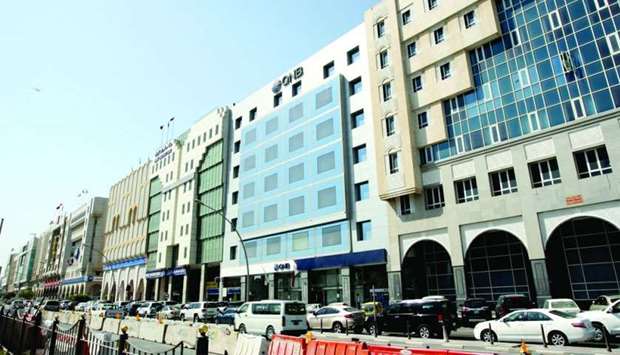Global credit rating agency Moody’s has upgraded Qatar’s banking sector outlook to “stable” from “negative”, reflecting the resilience of the country’s economy and banking system to the ongoing economic and diplomatic blockade.
The rating agency also noted that the country’s banking sector profitability will remain “stable” with capital buffers remaining “strong”.
Highlighting that the banks’ operating environment stand to benefit from higher economic growth, Moody’s forecasts Qatar’s real gross domestic product (GDP) to grow 2.7% in 2018 (against 1.6% a year ago), supported by high levels of public spending.
Qatar remains among the fastest growing economies in the Gulf Cooperation Council (GCC), with momentum fuelled by government-financed infrastructure projects both as part of the country’s National Development Strategy and preparations for the 2022 FIFA World Cup, supporting the resilience of the operating environment and the banking system, it said in a report.
Highlighting that the Qatari economy has rebalanced as the supply chain disruptions following the blockade recovered rapidly with initial levels of imports restored in less than four months into the blockade; the rating agency said this illustrates the economy’s flexibility and policy effectiveness in re-routing supplies.
Expecting Qatari banks’ profitability to remain “stable” over the review period, with return on assets at around 1.4% by 2019; Moody’s said Qatari banks’ interest rate margins are slated to remain stable at 2.2% achieved in 2017, because the gaps between credit growth and deposit growth have been narrowing, reducing pressure on funding, which will support funding costs.
Moreover, Qatari banks have started re-pricing assets, which will further support any generalised increase in funding costs due to current rising interest rate environment.
Although a modest rise in non-performing loans are expected, necessitating “moderately” higher provisioning charges, it, however, said the adoption of the IFRS 9 accounting standard in the first quarter of 2018 means the early recognition of expected losses will ultimately support profitability over the outlook period.
“Qatari banks’ profitability will be supported by the system’s strong efficiency. Qatar’s small and concentrated population means that banks can service their customers without the need for an extensive (and costly) branch network,” Moody’s said, forecasting that the system’s cost-to-income ratio will remain between 25% and 30% into 2019, the lowest among GCC banks.
Moody’s said capital buffers remain strong with tangible common equity expected to remain “stable” around 15.5% of risk-weighted assets by end 2019, driven by slower than normal credit growth and higher profit retention, counterbalancing the impact on the recognition of expected credit losses taken from the reserves for the implementation of IFRS 9.
Qatari banks’ capital adequacy compares favourably with their GCC peers
“Under our base-case (or most likely) scenario, we expect the system-wide capital ratio to increase slightly over a two-year horizon, to 15.7% by end-2019, from 15.5% in 2017. This will be mainly driven by healthy pre-provision income,” Moody’s said.
Finding that Qatari banks maintain sound and stable liquidity buffers with liquid assets at 24% of total assets as of December 2017, the rating agency it expects the banks’ liquid assets to remain stable over the outlook period.
“The bulk of these liquid assets are held in Qatari government securities (rated Aa3, stable), which can be repo-ed with the central bank in times of market stress,” it added.



